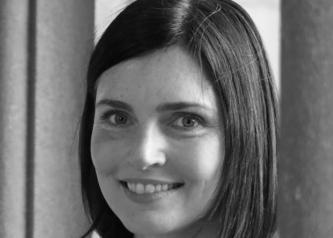

Associate Professor, Department of Organismal Biology and Anatomy
Stephanie Palmer answers crucial questions at the interface of neuroscience and statistical physics, exploring theories of neural population coding and particularly looking at how groups of neurons collectively encode information present in their inputs and how they perform predictive computations on these signals. She has worked closely with experimentalists to study a variety of systems that make predictions in the visual system, from flies to salamanders to mice. With the help of experimentalists, Palmer is able to use detailed measurements to constrain and test the theories of the “optimal neural predictor”.
Since 2012, Palmer has worked with French partners at Ecole Normale Supérieure, Paris 6 Université (Institut de la Vision), and the Centre National de la Recherche Scientifique (CNRS) to design new experiments to test for prediction in the mouse and salamander, establish connections between prediction in the brain and prediction in the immune system, and continue her work in identifying and refining common principles for the theoretical basis for biological prediction.
Fun fact: I have been teased relentlessly since grad school for listing my hobbies as “recreational mathematics” and “stunt kite flying”, but I continue to haul kites around on hikes and I recently attended a Mathematics of Origami conference at the MoMath in NYC, in part to meet my hero, Robert Lang. Sometimes, you must embrace and amplify your inner, intense dorkiness.
My grandmother, Mary Jane Palmer née Morrison, attended the University of Chicago and graduated in 1941 with a degree in Physics. She worked on radar communications during WWII in New Jersey, and I like to think that I’m following in her information theoretics footsteps.
Q: Why is international collaboration important in your field?
A: Biological data are being collected at an unprecedented volume and resolution in almost every domain, yet our understanding of how biological computations are orchestrated is patchy at best. By collaborating across labs and continents, we can accelerate our theoretical progress and avoid issues of the past centuries where research was done independently (sometimes in different centuries!) and knowledge had to be re-discovered many times before it became part of the global canon.
Q: How has your work with international partners been beneficial to you and your career, personally?
A: I’ve had the privilege of collaborating both with experimentalists (Marre) and theorists (Mora, Walczak) in Paris to drive our work forward faster. I am particularly excited about the connections we’re making with Mora and Walczak between the computations done in the brain and those executed by the immune system to remember previous pathogens and predict what will attack the system next. It’s very satisfying to start to see common computational motifs emerge across systems and scales, and hopefully points us all in the right direction towards foundational understanding of how computation evolves.